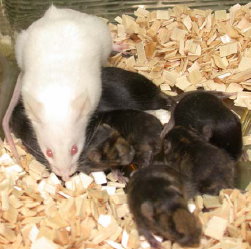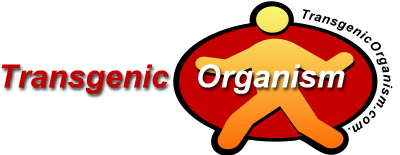Transgenic Mice
Transgenic mouse knockout system is commonly used transgenic technology can be divided into two categories:
Transgenic mice (transgenic mice) to genes microinjected recombinant DNA Direct then injected into mice, the original nucleus of the fertilized egg, is the production of transgenic mice, the highest success rate. Way, hundreds of large kb DNA fragment, this method can be used into the fertilized eggs. Typically, the number of duplicate genes will also want to implant into the same genomic position. These Inserted transgene can be combined by in situ hybridization (in situ hybridization) to confirm the position Home, because the location of transgene insertion and not be pre-measured. Therefore, the original source of each species Transgenic animals (founder animals) must establish its own independent transgenic base.
Strains of animals (transgenic line).
This technology platform in the operation is extremely economical, fast, To study the gene and therefore the initial test, great reference value. Chimeras (chimera) produced by the target gene (gene targeting) the way Specific variation (mutation) into cultured embryonic stem cells (embryonic stem cells, ES cells), then the target plasmid construct (targeting construct) by electrical pulses for With (electroporation) Transgenic it into the cell. Through special drug screening, and Lee Using polymerase chain reaction (PCR) or Southern blot (Southern blotting) to find ways The gene has been engineered cells and then injected into this cell by microinjection of the cavity of the blastocyst (Cavity of blastocyst), or body together with mulberry (morula aggregate) approach, the embryo Embryonic stem cells by adding fetal development. Finally, embryo implantation and then treated pregnant pseudopregnant agent Mother (pseudopregnant surrogate mother) in vivo, thus resulting chimeric mouse gene, a Once the chimeric mice to determine the correct gene as this there may be other genetic traits, by Traditional breeding methods, and non-transgenic animals, transgenic animals or other breeding and delivery To the offspring, as a unique species of plants (germ line). Transgenic and gene knockout technology, in addition to the development of a regulatory function of genes, embryo Fetal development, molecular genetics, tumor formation, and other important immune specificity the basis of biological and medical Be the most useful tool for many human diseases, animal models have provided new methods and medical Reagent test development tools.Since the first gene transfers into mice were successfully executed in 1980, transgenic mice have allowed researchers to observe experimentally the roles of genes in development, physiology and disease. Transgenic mice have become a real human pathology model and their use has dramatically increased for the past two decades. Medical devices companies have also succeeded in developing state-of-the-art miniature equipments adapted to mice enabling researchers to maximize their project study.
Transgenic Organism has provided the tools for exploring many biological questions and two methods of producing transgenic mice are widely used as follows:
- transforming embryonic stem cells (ES cells) growing in tissue culture with the desired DNA
- injecting the desired gene into the pronucleus of a fertilized mouse egg.
Normal mice cannot be infected with polio virus. They lack the cell-surface molecule that, in humans, serves as the receptor for the virus. So normal mice cannot serve as an inexpensive, easily-manipulated model for studying the disease. However, transgenic mice expressing the human gene for the polio virus receptor can be infected by polio virus and even.
 However, with current transgenesis methods, as the additive transgenesis technology, less than 10% of the host embryos integrate the foreign DNA into their genome. This integration process occurs in a random fashion, lacking control of gene expression levels. Besides once the animal founder is born and matured, there is no assurance that the founder animal’s offspring will inherit the foreign DNA. All these barriers slow down research developments.
However, with current transgenesis methods, as the additive transgenesis technology, less than 10% of the host embryos integrate the foreign DNA into their genome. This integration process occurs in a random fashion, lacking control of gene expression levels. Besides once the animal founder is born and matured, there is no assurance that the founder animal’s offspring will inherit the foreign DNA. All these barriers slow down research developments.
Today, a new and innovative technology has revealed to overcome these barriers. A biotechnological company specialized in custom made transgenic mice, introduces the fastest and most powerful tool in transgenesis to boost research activities: from DNA to characterized founders in 2 months only.
The new Technology is an outstanding way for in vivo target validation, drug optimization and pre-clinical studies. It consolidates the enhanced lineage contribution of the powerful BPES cells with the advantages of targeted construct-copy insertion at the HPRT docking site. The unique technology allows the generation of predictable and reproducible models with high efficiency in a very short time that particularly fits with the demands of the research market (overexpression, gene humanisation, in vivo RNAi models).
